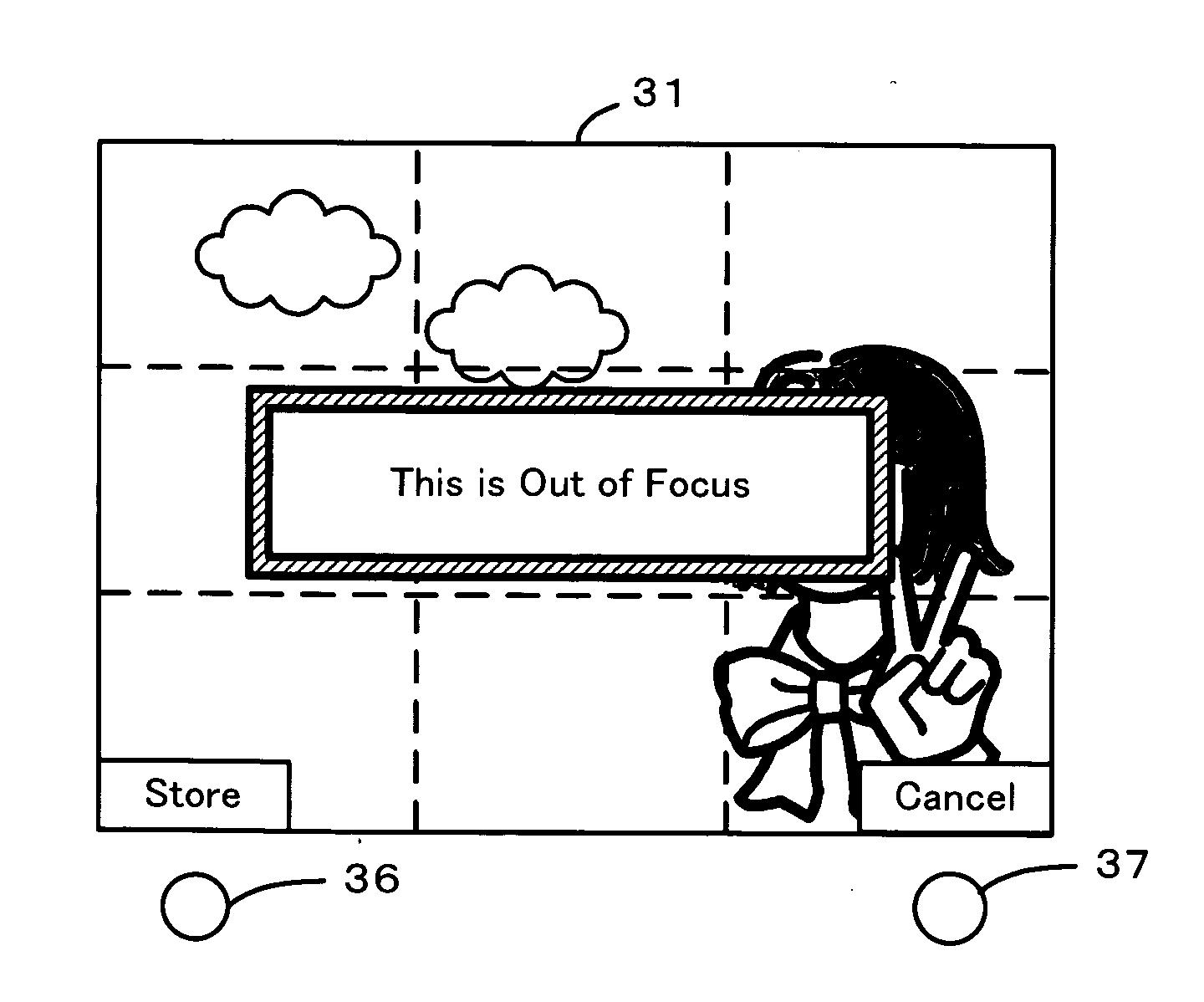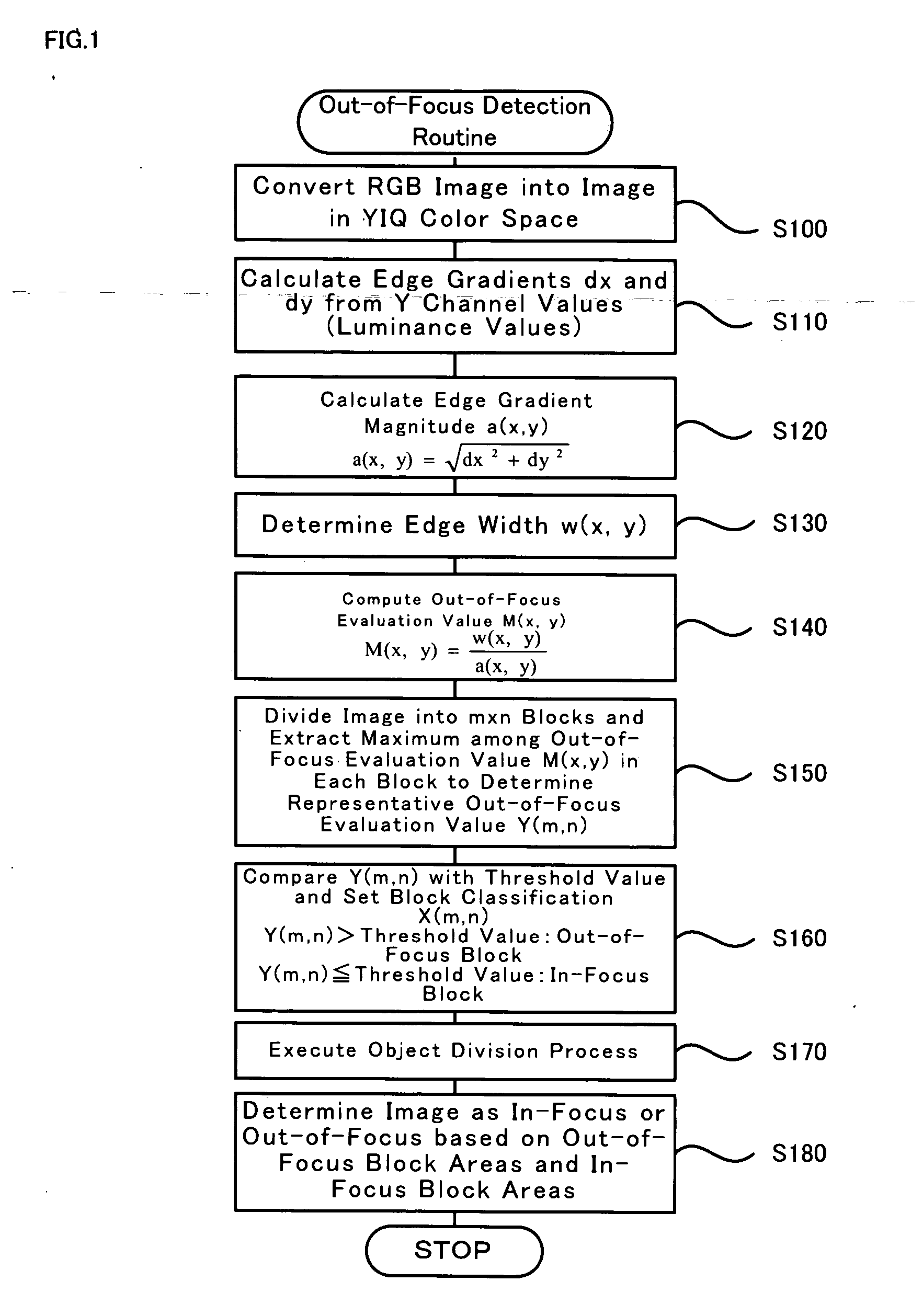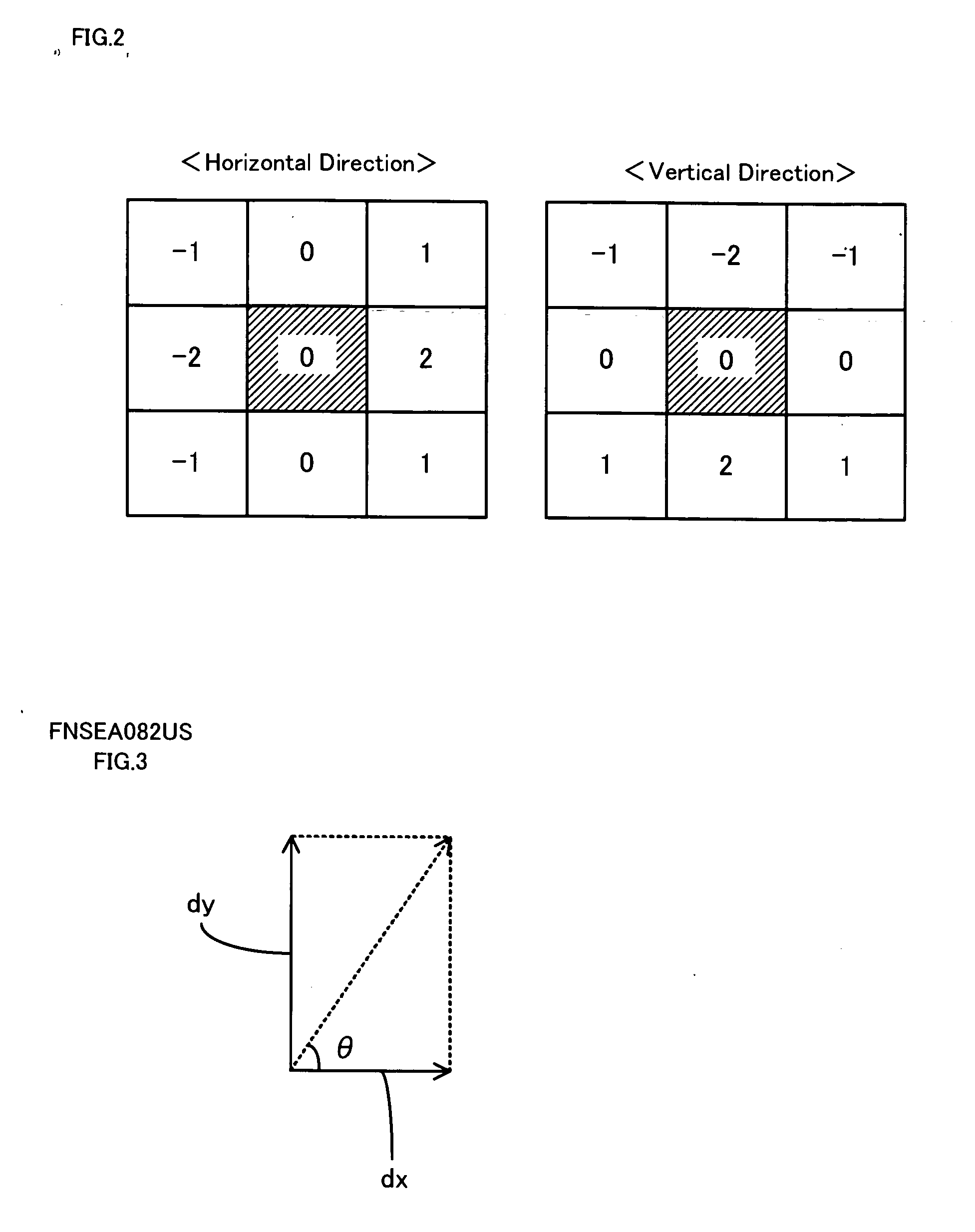Out-of-focus detection method and imaging device control method
a control method and detection method technology, applied in the field of out-of-focus detection methods, imaging devices, and control methods of imaging devices, can solve the problems of difficult for users to accurately determine whether the object image displayed on the liquid crystal monitor is in focus or out of focus, and the accuracy of the art out-of-focus detection method is relatively poor, so as to reduce processing load and improve evaluation potential
- Summary
- Abstract
- Description
- Claims
- Application Information
AI Technical Summary
Benefits of technology
Problems solved by technology
Method used
Image
Examples
Embodiment Construction
[0048] One mode of carrying out the invention is described below as a preferred embodiment. FIG. 1 is a flowchart showing a processing routine of out-of-focus detection method in one embodiment of the invention. The out-of-focus detection routine first converts an RGB image expressed in a color system of red (R), green (G), and blue (B) into a YIQ color space of three primary elements Y (luminance), I (orange-cyan), and Q (green-magenta) according to Equations (1) to (3) given below (step S100):
Y=0.299R+0.587G+0.114B (1)
I=0.596R−0.274G+0.322B (2)
Q=0.211R−0.523G+0.312B (3)
[0049] The out-of-focus detection routine then reads the Y channel values (luminance values) of the converted image in the YIQ color space and computes edge gradients dx and dy in both horizontal and vertical directions at each pixel position (x,y) (step S110). The out-of-focus detection routine calculates an edge gradient magnitude a(x,y) from the computed edge gradients dx and dy according to Equation (4) g...
PUM
 Login to View More
Login to View More Abstract
Description
Claims
Application Information
 Login to View More
Login to View More - R&D
- Intellectual Property
- Life Sciences
- Materials
- Tech Scout
- Unparalleled Data Quality
- Higher Quality Content
- 60% Fewer Hallucinations
Browse by: Latest US Patents, China's latest patents, Technical Efficacy Thesaurus, Application Domain, Technology Topic, Popular Technical Reports.
© 2025 PatSnap. All rights reserved.Legal|Privacy policy|Modern Slavery Act Transparency Statement|Sitemap|About US| Contact US: help@patsnap.com



